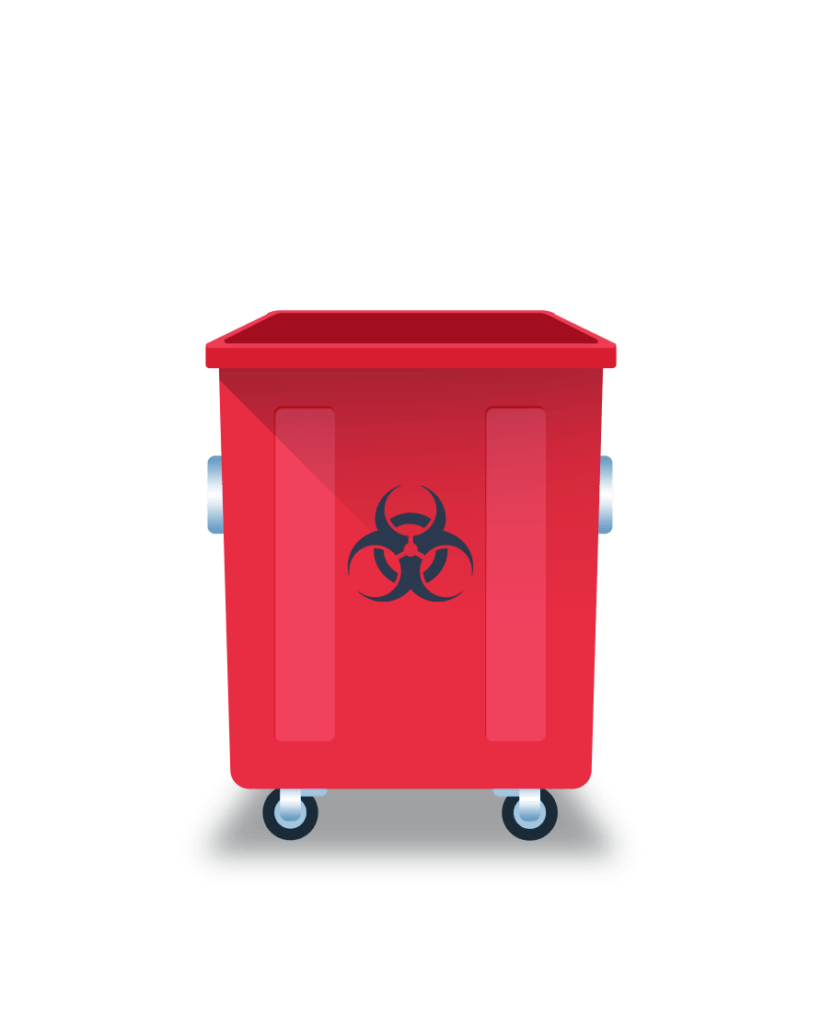Biohazardous waste, as defined by Iowa State University, is “All biologically contaminated waste that could potentially cause harm to humans, domestic or wild animals or plants. Examples include human and animal blood, tissues, and certain body fluids, recombinant DNA, and human, animal or plant pathogens.”
The short checklist you can run through your head to figure out if something is biohazardous waste is:
- Things soaked in blood
- Tissues or contaminated items created during a procedure
- Items that are potentially infectious, or that come from an infectious patient
If your waste fits these criteria you must place it in a biohazardous waste collection bag.
What Is a Bio-Bag?
A bio bag, also known as a biohazard waste collection bag or a red bag, is simply a red colored bag used to collect solid biohazardous or infectious waste. These bags are mainly used to separate infectious waste that must be sterilized from regular garbage.
If you mix up this waste you either waste money having your medical waste disposal vendor picking up regular garbage, or you harm the environment by not having your medical waste disposed of properly.
When Should I Use a Bio Bag?
When waste is infectious, blood, refer to complete guide to biohazard waste disposal.
Bio-bags should only be used when you have biohazardous waste! If you follow the checklist above, you should be safe in throwing trash into the red bag. However, I would err on the side of caution if you don’t know if something should go in a bio bag. It’s better to over-use the bag than to under-use it.
If you’d like a more comprehensive Guide to Biohazard Waste Disposal, check it out here.
What Do I Do with a Full Bio-Bag?
When your bag is full, you simply tie it up, place it in your secondary holding container, and have your medical waste disposal company come pick it up!



